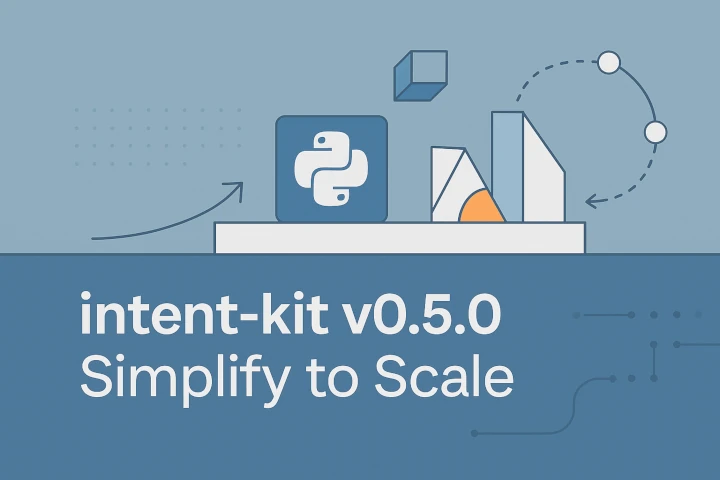intent-kit v0.5.0: Why I Hit Pause on Multi-Intent (and Why You Should Sometimes, Too)


Key Points
Why did you remove multi-intent support in this release?
Multi-intent workflows introduce layers of complexity that can easily outpace the stability of your core abstractions. To ensure reliability and testability, I temporarily removed multi-intent handling to focus on simplifying and stabilizing intent-kit's foundational workflow logic.
Does this mean intent-kit will never support multi-intent again?
No—multi-intent workflows will return, but only when the core architecture is robust and predictable enough to support them reliably.
What is the benefit of this simplification for developers using intent-kit today?
The system is now more predictable, easier to debug, and less prone to edge-case failures. This lets developers build and extend workflows with more confidence.
How does this approach help open source contributors?
With simpler, clearer abstractions, it's easier for new contributors to understand the codebase, write tests, and propose improvements—without getting lost in complex multi-intent routing.
What should you consider before re-adding complex features?
Focus on getting the basics right. Test, document, and harden your core abstractions first, then layer on complexity once the foundation is proven.
intent-kit v0.5.0: Sometimes You Have to Simplify to Scale
With intent-kit v0.5.0, I made what looked like a “step back”: I temporarily pulled out multi-intent workflows and focused on making single-intent handling as clean, deterministic, and testable as possible.
Why? Because abstractions only compound value when they’re stable. If the core gets tangled, every new feature becomes a liability.
The Temptation of “More”
I love ambitious features. I want intent-kit to route, split, and orchestrate truly complex multi-intent workflows. But early experiments showed me that abstraction debt piles up fast:
- Bugs hid in the routing logic
- Debugging became a multi-hour marathon
- Contributors (and sometimes even I) got lost in the weeds
Why I Hit Pause
So for this release, I asked: What if I put multi-intent on ice and just nailed the fundamentals?
I removed all the half-baked multi-intent code, and committed to one core question: Can this system do single-intent processing in a way that’s bulletproof, observable, and easy to reason about?
What Improved
- Cleaner abstractions: The node system, context tracing, and remediation are now focused and easier to test.
- Predictable workflows: No more second-guessing how an input is routed; execution is linear and debuggable.
- Easier onboarding: New contributors get up to speed faster, with less cognitive overhead.
What’s Next?
Multi-intent workflows aren’t dead—they’re just paused until the foundation is strong enough to support them for real-world, production use.
What I Learned
Sometimes, you have to scale back to move forward. By ruthlessly simplifying—even at the cost of temporarily removing shiny features—you can set your project up for real, sustainable growth.
If you’re feeling bogged down by complexity in your own system, ask yourself:
- Are you adding features on a shaky foundation?
- Would a temporary step back actually help you leap further ahead?
intent-kit v0.5.0 is my answer: solidify the core, then bring back the big ideas—stronger than before.
Want to try it? Check out the repo. Questions or feedback? Connect with me on LinkedIn.